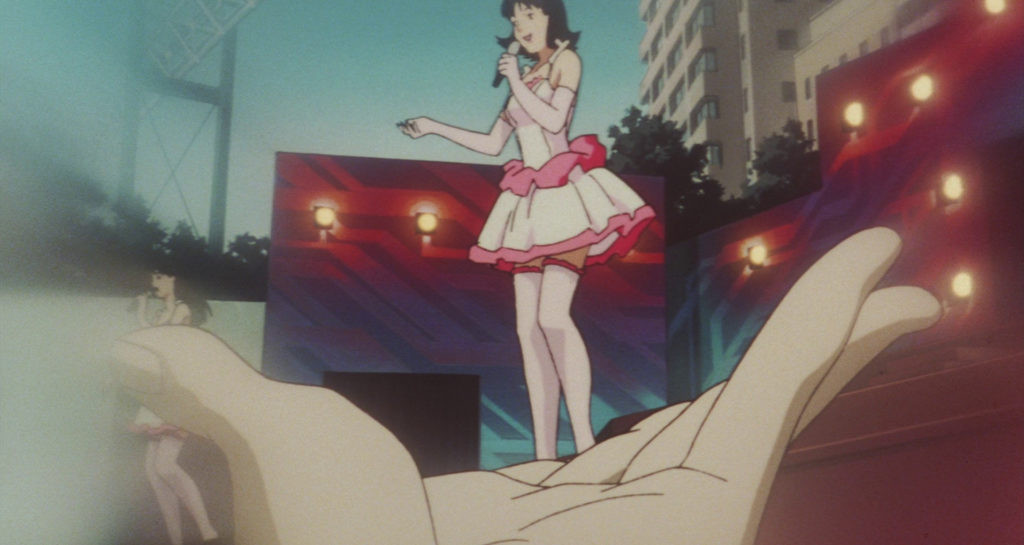Perfect Blue
★★★☆☆ 1/2
This month, the Dave Barber Cinematheque screens Perfect Blue (1997), a Japanese animated psychological thriller. This screening is presented by Bikini Drive-in, a semi-monthly screening and discussion of pivotal horror films viewed with a feminist eye.
Perfect Blue tells the story of Mima Kirigoe (Junko Iwao), a young starlet who resigns from the J-pop girl group CHAM! (pronounced “sham”) and attempts to launch a career as a full-fledged actress. It doesn’t turn out as well as she’d hoped.
What starts out as a typical showbiz tale of dissatisfaction and subsequent misplaced ambition soon devolves into a hysterical and tenuously glued-together collage of interrelated events and episodes.
She’s stalked by stone-faced creeper Me-Mania (Masaaki Ōkura), a superfan continuously lurking in the foreground. The uber-fan becomes enraged at her turn from wholesome peddler of perfunctory pop confections to a scream queen in TV series Double Bind, which places the young woman in compromising fictional scenarios.
Over the course of the film, the line between character, actress and self is blurred through Mima’s unreliable perspective. Professionals associated with Mima are killed in a series of brutal murders, and Mima begins to doubt her own innocence as she hallucinates an alternate identity based on her prior CHAM! (pun probably intended) persona.
During a particularly revered era in Japanese animation, Perfect Blue eschews overt Western homage and mecha (robot) anime trope subversion for a sharp look into the voyeuristic nature of existing in the spotlight. As a young actress, Mima struggles with the increasingly exploitative roles she is forced to accept in her pursuit of stardom and the mental toll they take.
Her stalker, viewers and fans all blend together as indistinguishable prying eyes. The picture deftly reminds viewers that the mere feeling of being watched can be chalked up to paranoia, while the certainty of being watched is the plight of the celebrity.
That the film is animated is an astute choice. The additional barrier between reality serves as an easy means of obfuscating viewers’ understanding of a given scene’s context and reality in general.
A Greek chorus-like troupe of snivelling fanboys serve as clever commentary throughout the film, providing a dash of humour to a desolate tale. This same inspired storytelling convention also highlights a slight problem for the film. Like a blackhead, it can be on the nose. The picture mostly makes up for it, especially when the feverish editing style and slick animation, along with a striking, foreboding score, are more than enough to distract from an aversion to nuance.
The ending in particular is a bit too conventional and tidy for my liking, even if it does bolster some of the film’s themes and provides resolution to its key mystery. But at an economical 81 minutes, this film delivers its core thesis with style and genuine thrills. The apprehension at being overly scrutinized is universal, regardless of fame or social status. However, it may be best to live and let leer. If the film espouses any lesson, it’s that it’s best to leave that stone unturned.
Published in Volume 77, Number 20 of The Uniter (March 2, 2023)








